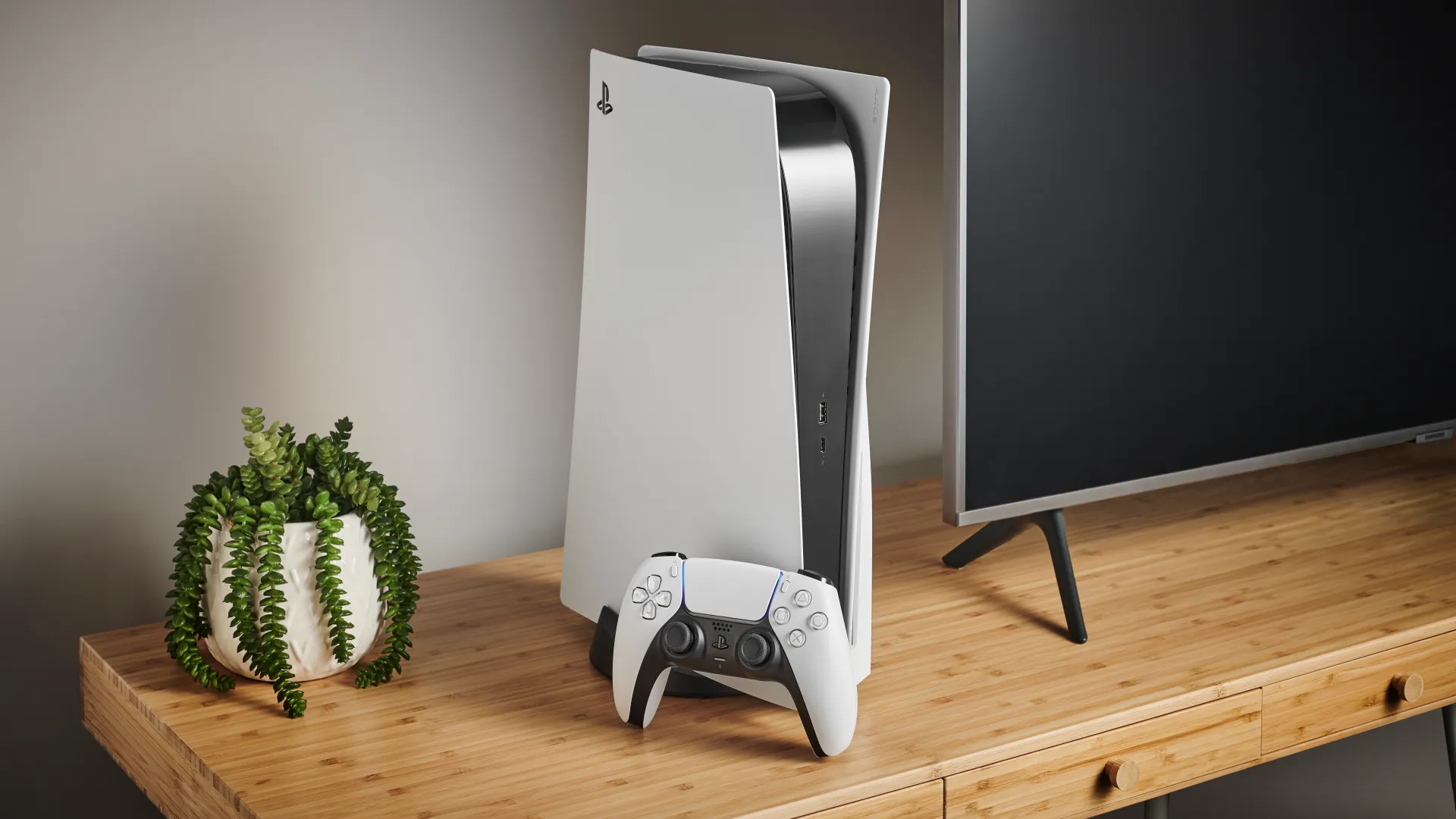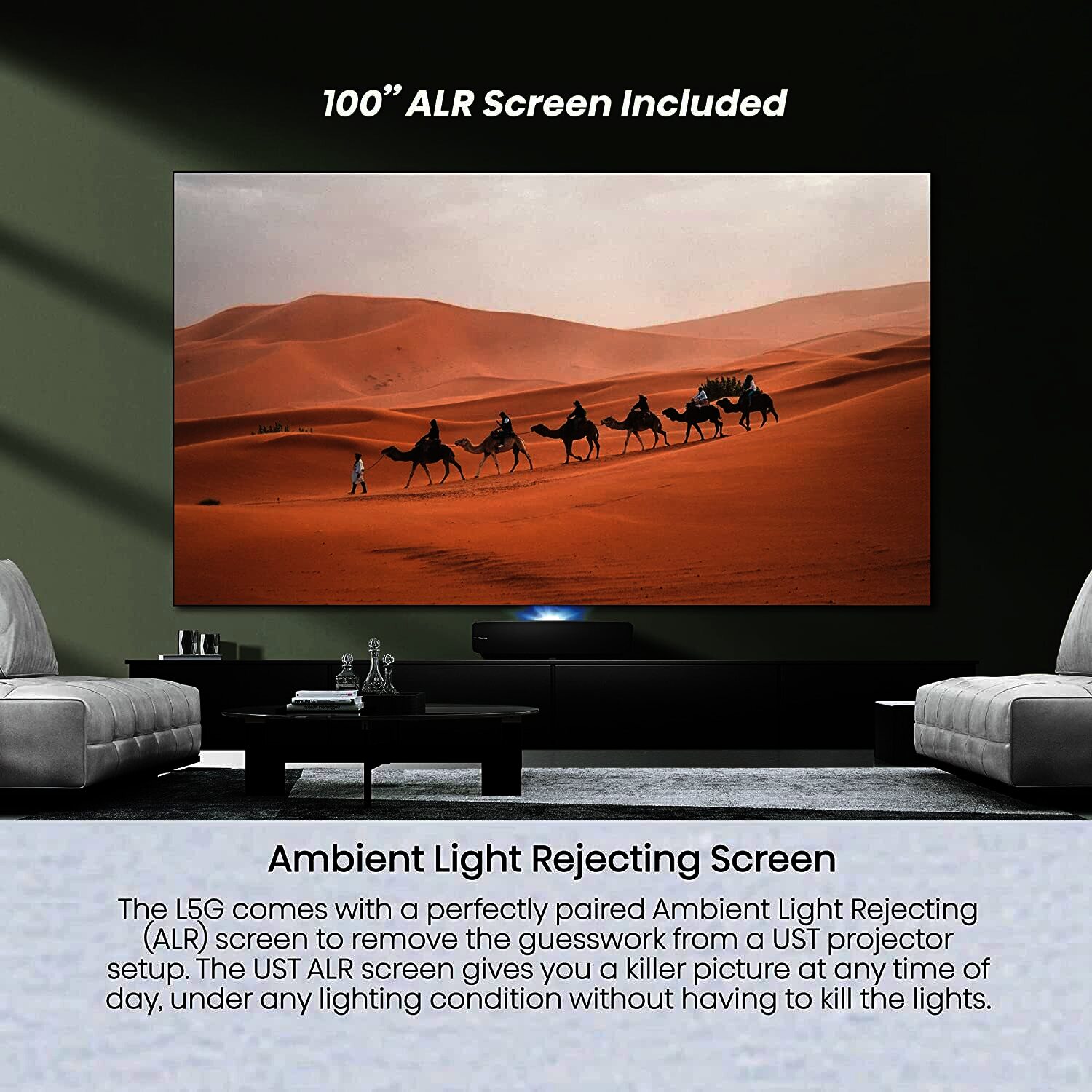OLED TVs Nigeria 2025: Ultimate Technology Guide, Prices & Expert Buying Tips
OLED (Organic Light-Emitting Diode) technology represents the pinnacle of display innovation, delivering perfect blacks, infinite contrast ratios, and unparalleled picture quality that transforms home entertainment into a cinematic masterpiece. In Nigeria's premium TV market, OLED displays offer the ultimate viewing experience with self-lit pixels that can turn completely off, creating true blacks and colors that appear to float in space with incredible depth and realism.
In 2025, OLED TVs have become more accessible while maintaining their position as the gold standard for picture quality, offering advanced gaming features, smart platforms, and design elegance that complements modern Nigerian homes. This comprehensive guide explores OLED technology, compares leading brands, analyzes pricing, and provides expert recommendations to help you choose the perfect OLED TV that delivers reference-quality viewing for your investment.
✨ OLED Technology Overview 2025:
- Perfect Blacks: Self-lit pixels turn completely off for true black levels
- Infinite Contrast: Unlimited contrast ratio with precise pixel control
- Premium Brands: LG, Samsung, Sony leading OLED innovation
- Price Range: ₦1,485,000 - ₦4,285,000 for premium OLED experience
- Gaming Excellence: 120Hz, VRR, ALLM for next-generation consoles
- Design Premium: Ultra-thin profiles with gallery-worthy aesthetics
OLED Technology Deep Dive 2025
🔬 Understanding OLED Technology
OLED technology utilizes organic compounds that emit light when electric current is applied, eliminating the need for backlighting and allowing each pixel to function independently. This revolutionary approach enables perfect blacks, infinite contrast, and color accuracy that surpasses all other display technologies currently available.
Core OLED Advantages:
- Self-Lit Pixels: Each pixel generates its own light independently
- Perfect Blacks: Pixels turn completely off for true black reproduction
- Infinite Contrast: Unlimited contrast ratio between blacks and whites
- Wide Viewing Angles: Consistent picture quality from any position
- Fast Response Time: Instant pixel response eliminates motion blur
- Ultra-Thin Design: No backlight required enables incredibly slim profiles
- Energy Efficiency: Only illuminated pixels consume power
OLED vs Other Technologies:
| Feature | OLED | QLED | LED |
|---|---|---|---|
| Black Levels | Perfect (0 nits) | Very Good | Limited |
| Contrast Ratio | Infinite | High | Standard |
| Viewing Angles | Excellent | Good | Limited |
| Response Time | Instant (0.1ms) | Fast (1-5ms) | Moderate (5-15ms) |
| Peak Brightness | Good (800 nits) | Excellent (1000+ nits) | Standard (400-600 nits) |
| Lifespan | Good (100,000 hours) | Excellent | Excellent |
| Price Range | Premium | Mid-Premium | Budget-Mid |
🌟 OLED Unique Benefits
Picture Quality Excellence:
OLED's ability to achieve perfect blacks creates a viewing experience where bright objects appear to glow against completely dark backgrounds, delivering depth and realism that cannot be replicated by any backlit display technology.
- True HDR Performance: Perfect blacks enable full dynamic range
- Color Accuracy: Wide color gamut with precise reproduction
- Shadow Detail: Subtle details visible in dark scenes
- Highlight Pop: Bright elements stand out dramatically
- Realistic Depth: Three-dimensional image appearance
- Professional Reference: Meets mastering monitor standards
Gaming Performance:
- Instant Response: 0.1ms pixel response time eliminates lag
- 120Hz Gaming: Smooth high-frame-rate gameplay
- VRR Support: Variable refresh rate prevents tearing
- ALLM Optimization: Automatic low latency mode activation
- G-SYNC Compatible: NVIDIA graphics card synchronization
- Professional Gaming: Competitive gaming advantages
Design and Aesthetics:
- Gallery Design: Ultra-thin profiles for wall mounting
- Minimal Bezels: Edge-to-edge viewing experience
- Premium Materials: High-quality construction and finishes
- Flexible Installation: Multiple mounting and placement options
- Elegant Integration: Complements modern home decor
- Ambient Lighting: Bias lighting compatibility
⚠️ OLED Considerations for Nigerian Homes
Brightness and Room Lighting:
While OLED excels in most viewing conditions, understanding brightness limitations helps optimize the viewing experience for Nigerian homes with varying lighting conditions.
- Optimal in Dark Rooms: OLED's strengths shine in controlled lighting
- Moderate Bright Rooms: Performs well with controlled ambient light
- Very Bright Rooms: May struggle against intense sunlight
- Window Placement: Avoid direct sunlight on screen
- Room Treatment: Light curtains enhance OLED performance
- Bias Lighting: LED strips behind TV improve perceived contrast
Lifespan and Burn-in:
- Modern Improvements: 2025 OLEDs highly resistant to burn-in
- Protective Features: Automatic brightness limiting and pixel shifting
- Varied Content: Mixed viewing content prevents static image retention
- Screen Savers: Built-in protection during static displays
- Expected Lifespan: 100,000+ hours of typical viewing
- Warranty Coverage: Most brands include burn-in protection
Leading OLED TV Brands Nigeria 2025
🏆 LG OLED - Technology Pioneer and Market Leader
LG pioneered consumer OLED technology and continues to lead innovation with their self-lit pixel displays, advanced webOS platform, and comprehensive gaming features that define the premium OLED experience.
LG OLED Advantages:
- OLED Expertise: Most experienced OLED manufacturer globally
- Advanced Processing: α9 Gen6 AI processor optimization
- webOS Platform: Intuitive smart TV interface and features
- Gaming Leadership: Comprehensive next-gen gaming features
- Size Range: Complete selection from 48" to 83" models
- Service Network: Excellent support and warranty coverage
🏆 Top LG OLED Models 2025:
LG 55" OLED C3 OLED55C3PSA
Price: ₦1,485,000
Why It's Exceptional: Perfect entry point to OLED technology with comprehensive features.
- 55-inch OLED display with perfect blacks and infinite contrast
- α9 Gen6 AI processor enhances picture and sound quality
- webOS 23 smart platform with ThinQ AI integration
- Comprehensive gaming features including 120Hz, VRR, ALLM
- Dolby Vision IQ and Dolby Atmos for premium content
- Best value OLED for most Nigerian living rooms
LG 65" OLED C3 OLED65C3PSA
Price: ₦1,785,000
Why It's Exceptional: Large screen OLED excellence for immersive entertainment.
- 65-inch OLED for ultimate home entertainment experience
- Advanced AI processing optimizes all content types
- Professional gaming performance with G-SYNC compatibility
- Gallery design perfect for wall mounting
- Magic Remote with voice control and pointer navigation
- Premium large screen OLED at competitive pricing
LG 77" OLED G3 OLED77G3PSA
Price: ₦2,985,000
Why It's Exceptional: Flagship gallery design with ultimate OLED performance.
- Massive 77-inch OLED display for luxury entertainment
- Gallery design mounts flush against wall like artwork
- α9 Gen6 processor with Brightness Booster technology
- Professional-grade calibration and reference quality
- Ultra-premium build quality and premium materials
- Ultimate OLED experience for luxury Nigerian homes
⚡ Samsung OLED - QD-OLED Innovation
Samsung's QD-OLED technology combines quantum dot color enhancement with OLED's self-lit pixels, delivering brighter colors and enhanced peak brightness while maintaining perfect blacks.
Samsung QD-OLED Advantages:
- QD-OLED Technology: Quantum dot enhanced OLED displays
- Enhanced Brightness: Higher peak brightness than traditional OLED
- Quantum Colors: Enhanced color volume and accuracy
- Tizen Platform: Samsung's comprehensive smart TV ecosystem
- Gaming Hub: Cloud gaming and console optimization
- Design Excellence: Premium aesthetics and build quality
🏆 Top Samsung OLED Models 2025:
Samsung 55" QD-OLED S95C QA55S95C
Price: ₦1,985,000
Why It's Exceptional: Revolutionary QD-OLED technology with enhanced brightness and colors.
- 55-inch QD-OLED display with quantum dot enhancement
- Neural Quantum Processor 4K optimizes all content
- Quantum HDR OLED+ delivers exceptional dynamic range
- 144Hz gaming with AMD FreeSync Premium Pro
- Ultra-slim design with premium LaserSlim profile
- Samsung's most advanced OLED technology
Samsung 65" QD-OLED S95C QA65S95C
Price: ₦2,485,000
Why It's Exceptional: Large screen QD-OLED with premium features and design.
- 65-inch QD-OLED for ultimate entertainment experience
- One Connect Box centralizes all connections
- Object Tracking Sound+ creates immersive audio
- Gaming Hub with cloud gaming integration
- Premium design with nearly invisible cable management
- Flagship QD-OLED technology at its finest
🎬 Sony OLED - Professional Picture Processing
Sony brings professional display expertise to consumer OLED TVs with advanced picture processing, accurate color reproduction, and features designed for serious viewing enthusiasts and content creators.
Sony OLED Advantages:
- Picture Processing: Professional-grade XR Cognitive Processor
- Color Accuracy: Reference-quality calibration and reproduction
- Content Creation: Features for professional content creators
- Google TV: Advanced Android TV platform integration
- Audio Excellence: Acoustic Surface Audio+ technology
- Professional Support: Calibration and professional features
🏆 Top Sony OLED Models 2025:
Sony 55" OLED A80L XR-55A80L
Price: ₦1,785,000
Why It's Exceptional: Professional picture processing with Sony's expertise and precision.
- 55-inch OLED display with XR Cognitive Processor
- Perfect for Netflix with calibrated mode
- Acoustic Surface Audio+ sound technology
- Professional gaming features with 120Hz VRR
- Google TV platform with comprehensive app support
- Sony professional display expertise for consumers
Sony 65" OLED A95L XR-65A95L
Price: ₦3,485,000
Why It's Exceptional: Flagship OLED with professional features and ultimate picture quality.
- 65-inch QD-OLED display with Sony processing excellence
- XR Cognitive Processor delivers reference-quality picture
- Professional calibration features and color accuracy
- Acoustic Surface Audio Pro+ premium sound system
- Content creator features and professional connectivity
- Ultimate Sony OLED for professional and enthusiast use
OLED TVs 2025: The Ultimate Display Experience
🎯 OLED Technology Summary
Why Choose OLED in 2025:
- ✅ Perfect Picture Quality: Infinite contrast and perfect blacks
- ✅ Gaming Excellence: Instant response time and advanced features
- ✅ Premium Design: Ultra-thin profiles and gallery aesthetics
- ✅ Future-Proof: Latest technologies and streaming platforms
- ✅ Brand Choice: LG, Samsung, Sony offering diverse options
- ✅ Size Range: 48"-83" covering all room requirements
OLED Perfect Applications:
- Home Theater: Ultimate cinematic experience with perfect blacks
- Gaming: Instant response for competitive and casual gaming
- Content Creation: Reference-quality display for professionals
- Premium Viewing: Best possible picture quality for enthusiasts
- Modern Homes: Gallery design complements contemporary decor
🏆 Final OLED Recommendations 2025
🥇 Best Overall OLED Value:
LG 55" OLED C3 OLED55C3PSA (₦1,485,000)
- Perfect entry point to OLED technology
- Comprehensive gaming and streaming features
- Proven LG OLED reliability and support
- Ideal size for most Nigerian living rooms
🥈 Best Premium OLED:
Samsung 65" QD-OLED S95C (₦2,485,000)
- Revolutionary QD-OLED technology
- Enhanced brightness and color volume
- Premium design with One Connect convenience
- Large screen flagship experience
🥉 Best Professional OLED:
Sony 55" OLED A80L (₦1,785,000)
- Professional picture processing expertise
- Reference-quality color accuracy
- Content creator features and calibration
- Sony reliability and professional support
🛒 Experience OLED Excellence
Discover the ultimate display technology with OLED TVs that deliver perfect blacks, infinite contrast, and unmatched picture quality. Whether you choose LG's proven expertise, Samsung's innovative QD-OLED, or Sony's professional processing, experience viewing like never before.
Why Choose Zit Electronics for Your OLED TV:
- ✅ Authentic OLED TVs from all premium brands with full warranties
- ✅ Expert consultation for OLED technology and room optimization
- ✅ Professional delivery and white-glove installation services
- ✅ OLED calibration and setup optimization for Nigerian conditions
- ✅ Comprehensive after-sales support and premium service
- ✅ Latest 2025 OLED models with cutting-edge features
Transform your entertainment experience with OLED technology that redefines what's possible in home viewing. Choose the OLED TV that delivers perfect picture quality for your Nigerian home.
Last updated: October 2025. Prices and availability subject to change. Visit Zit.ng for current OLED TV pricing and special offers.






